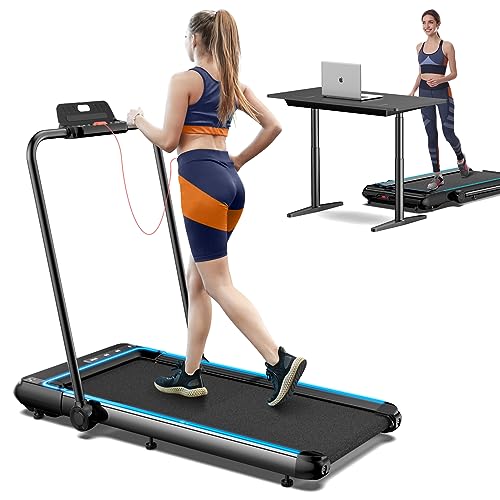The Walking Machine: A Comprehensive Guide to Your Fitness Companion
In today's hectic world, where time is a luxury, preserving a consistent workout regimen can be a difficulty. For lots of, a walking machine-- commonly called a treadmill-- works as a perfect fitness companion. This post supplies a thorough take a look at walking machines, including their advantages, types, maintenance pointers, and frequently asked concerns.
Why Choose a Walking Machine?
Walking machines provide a useful and effective way to incorporate cardiovascular exercise into everyday life. Here are numerous crucial benefits:
- Convenience: Walking machines permit individuals to work out anytime, no matter weather conditions or time restraints. They are ideal for busy schedules.
- Versatility: Users can stroll, jog, or run at their own rate and intensity.
- Safety: Walking machines provide a lower threat of injury compared to outside walking or running, especially for novices or those recuperating from injuries.
- Tracking Progress: Many treadmills come with integrated displays that track metrics like speed, distance, and calories burned.
Types of Walking Machines
When considering a walking machine, it's vital to select the right type based upon individual fitness goals and space constraints. Below are the primary kinds of walking machines:
| Type | Description |
|---|---|
| Manual Treadmills | These machines do not have a motor, and users require to stroll or go to turn the belt. |
| Electric Treadmills | Powered by an electric motor, allowing users to set the speed and incline effortlessly. |
| Folding Treadmills | Designed for easy storage, these treadmills can be folded up when not in use. |
| Desk Treadmills | Ideal for a double work and exercise environment, these compact machines permit walking while working. |
| Incline Trainers | These allow users to imitate uphill walking, enhancing workout strength and calorie burn. |
Picking the Right Walking Machine
Selecting the best walking machine can considerably affect inspiration and efficiency. Here are some elements to think about:
Key Features to Look For
- Motor Power: A powerful motor guarantees a smooth and consistent exercise. For occasional walkers, a 1.5 HP motor is generally adequate; for heavier usage, search for 3.0 HP and above.
- Belt Size: A broader and longer belt supplies more area for a comfortable stride. Home Treadmill vary from 16 inches wide and 50 inches long.
- Slope Options: Adjustable incline settings can imitate walking or running uphill, increasing the strength of the workout.
- Shock Absorption: Good shock absorption reduces the threat of joint injuries and improves convenience.
- Console Features: Look for integrated exercises, heart rate screens, and connectivity features like Bluetooth for a more appealing experience.
Spending plan Considerations
Walking machines come in a wide variety of costs, depending upon features and building and construction quality. Here's a rough budget breakdown:
| Price Range | Features |
|---|---|
| Under ₤ 300 | Basic handbook or small electric treadmills with limited features. |
| ₤ 300 - ₤ 700 | Advanced electric treadmills with slope, medium power motors, and better warranties. |
| ₤ 700 - ₤ 1500 | High-quality electric treadmills with bigger built-in screens, comprehensive functions, and service warranties. |
| ₤ 1500 and above | High-end models using advanced innovation, features, and long lasting construction for serious fitness lovers. |
Upkeep Tips for Your Walking Machine
To make sure durability and optimal efficiency of a walking machine, consider the following maintenance ideas:
- Regular Cleaning: Dust and sweat can build up on the machine and the belt. Wipe down the surface areas and clean the belt frequently.
- Lubrication: Depending on the design, lubing the running belt regularly can prevent wear and tear. Inspect the manufacturer guidelines for suggested lubrication schedules.
- Examination: Periodically check the machine for loose screws or used parts. Tighten and change as required.
- Calibration: Occasionally, check the calibration of your machine's metrics to guarantee they offer accurate information.
- Correct Use: Follow the maker's suggestions for weight limits and operational guidelines.
Frequently Asked Questions About Walking Machines
1. Are walking machines an excellent exercise?
Yes, walking machines offer an outstanding cardiovascular exercise, can assist with weight loss, and enhance overall health.
2. How often should I utilize a walking machine?
Go for at least 150 minutes of moderate-intensity aerobic activity each week, which can quickly be attained with routine sessions on a walking machine.
3. Can I reduce weight on a walking machine?
Yes, integrating a walking machine regimen into a healthy diet plan can promote weight loss, especially if combined with intervals and incline training.
4. Is it safe for senior citizens to use a walking machine?
Yes, walking machines can be safe for elders with low-impact settings and security functions like handrails. However, people should talk to their doctor before beginning any exercise program.
5. What's the difference in between a treadmill and a walking machine?
The term "walking machine" usually describes a treadmill planned for walking, while "treadmill" can refer to machines used for different intensities, consisting of running.
With their adaptability and convenience, walking machines can substantially improve one's physical fitness journey. By carefully picking the ideal type, ensuring proper upkeep, and incorporating various exercise strategies, users can optimize their walking machine's benefits. As with any exercise regimen, consistency is key to accomplishing enduring physical fitness results.

